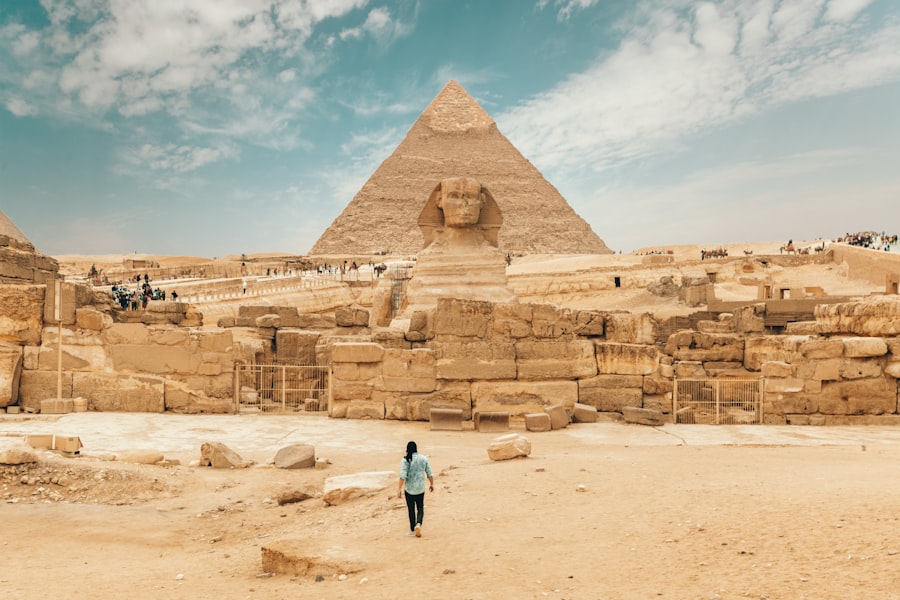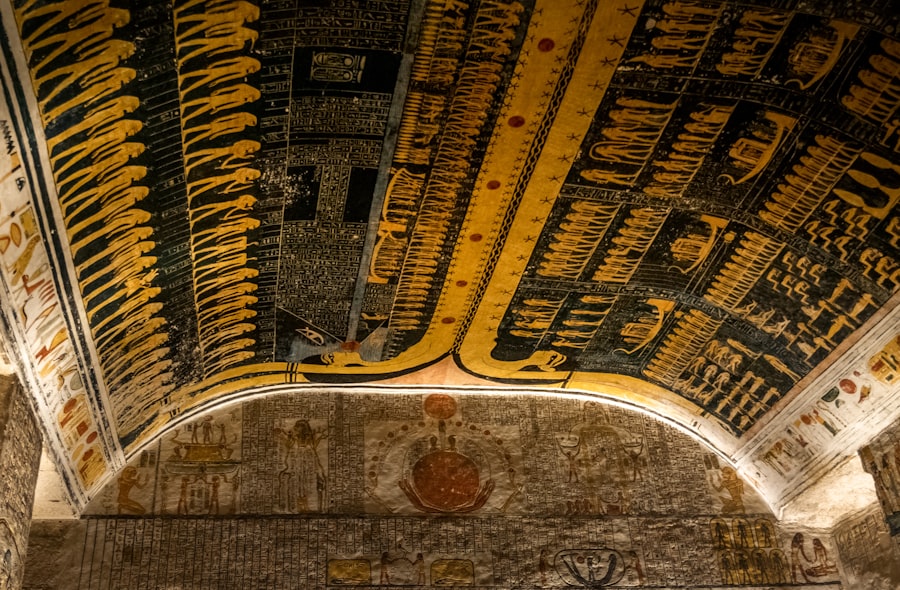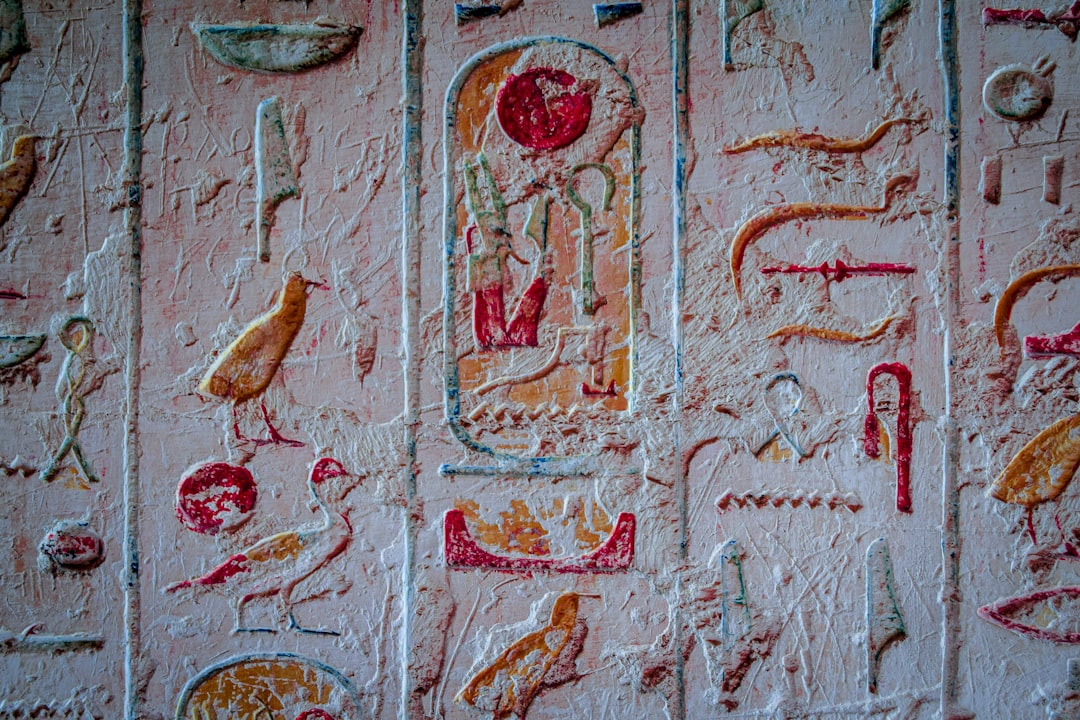The history of Ancient Egypt is a tapestry woven with threads of grandeur, innovation, and mystery. Spanning over three millennia, this civilization flourished along the banks of the Nile River, becoming one of the most influential cultures in human history. The Egyptians are renowned for their monumental architecture, including the iconic pyramids and temples that still captivate the imagination of people around the world.
Their society was marked by a complex social structure, advanced agricultural practices, and a rich pantheon of gods and goddesses that played a central role in their daily lives. The legacy of Ancient Egypt extends beyond its impressive monuments; it encompasses a wealth of knowledge in fields such as mathematics, medicine, and astronomy. The Egyptians developed a calendar based on the lunar cycle, which was crucial for agricultural planning.
Their medical practices, documented in texts like the Ebers Papyrus, reveal an understanding of anatomy and healing that was advanced for its time. This rich history continues to be a source of fascination for historians and archaeologists alike, as they strive to piece together the lives of those who inhabited this remarkable civilization.
Key Takeaways
- Recent excavations have uncovered new tombs and burial sites, shedding light on ancient Egyptian life and death rituals.
- Advanced technology plays a crucial role in rediscovering and analyzing artifacts and structures.
- New findings provide deeper insights into daily life, art, architecture, religion, and beliefs of ancient Egyptians.
- Understanding hieroglyphics remains essential for interpreting historical records and cultural context.
- Preservation efforts are vital to protect artifacts and sites, ensuring the future of archaeological research in Egypt.
Recent Archaeological Excavations in Egypt
In recent years, Egypt has witnessed a resurgence in archaeological activity, with numerous excavations uncovering treasures that have lain hidden for centuries. These efforts have been fueled by both national pride and international interest in the ancient world. The Egyptian government has actively promoted archaeological tourism, leading to increased funding and support for excavation projects.
As a result, archaeologists from around the globe have flocked to the region, eager to contribute to the ongoing exploration of this ancient land. Excavations have taken place in various locations, from the bustling city of Luxor to the remote deserts surrounding the Valley of the Kings. Each site offers unique insights into the lives of ancient Egyptians, revealing artifacts that range from everyday tools to elaborate burial goods.
The discoveries made during these excavations not only enhance our understanding of ancient Egyptian culture but also highlight the importance of preserving these sites for future generations. As new findings emerge, they challenge existing narratives and encourage scholars to reevaluate what is known about this fascinating civilization.
Uncovering New Tombs and Burial Sites

One of the most exciting aspects of recent archaeological work in Egypt has been the discovery of new tombs and burial sites. These findings have provided invaluable information about burial practices, social hierarchies, and the beliefs surrounding death and the afterlife.
Such discoveries shed light on the evolution of funerary customs and the significance of burial goods in ensuring a safe passage to the afterlife. The unearthing of these tombs has also sparked interest in the individuals buried within them. Each tomb tells a story, revealing details about the lives of those who once walked the earth thousands of years ago.
The inscriptions found within these burial sites often provide insights into their owners’ status, profession, and familial connections. As archaeologists continue to explore these sites, they are piecing together a more comprehensive picture of ancient Egyptian society, one that encompasses not only the elite but also the lives of ordinary citizens.
The Role of Technology in Rediscovering Ancient Egypt
| Technology | Application | Impact on Rediscovery | Example |
|---|---|---|---|
| Ground-Penetrating Radar (GPR) | Detecting underground structures | Enabled archaeologists to locate hidden tombs and temples without excavation | Discovery of hidden chambers in the Great Pyramid of Giza |
| 3D Scanning and Modeling | Creating detailed digital replicas of artifacts and sites | Preserved fragile artifacts digitally and allowed virtual exploration | 3D models of Tutankhamun’s tomb artifacts |
| Satellite Imaging | Mapping and identifying archaeological sites from space | Revealed lost cities and ancient river courses | Identification of the lost city of Tanis |
| DNA Analysis | Studying ancient human remains | Provided insights into lineage, health, and migration patterns | Genetic study of mummies from the Valley of the Kings |
| Artificial Intelligence (AI) | Deciphering hieroglyphs and analyzing data | Accelerated translation and pattern recognition in texts | AI-assisted translation of newly discovered inscriptions |
| Virtual Reality (VR) | Immersive educational experiences | Allowed users to explore ancient sites virtually | VR tours of the Karnak Temple Complex |
The integration of technology into archaeological practices has revolutionized the way researchers approach their work in Egypt. Advanced techniques such as ground-penetrating radar, 3D scanning, and drone photography have allowed archaeologists to survey vast areas without disturbing the ground. These technologies enable them to identify potential sites for excavation and gather data that would have been impossible to obtain through traditional methods alone.
Moreover, digital tools have facilitated collaboration among researchers worldwide. Online databases and virtual reality models allow scholars to share findings and engage with artifacts in ways that were previously unimaginable. This technological advancement not only enhances research but also democratizes access to knowledge about Ancient Egypt, making it available to a broader audience.
As technology continues to evolve, it promises to unlock even more secrets hidden beneath the sands of time.
New Insights into Ancient Egyptian Daily Life
Recent discoveries have provided fresh perspectives on daily life in Ancient Egypt, revealing a society that was both complex and vibrant. Excavations have uncovered remnants of homes, tools, and pottery that illustrate the everyday activities of ordinary Egyptians.
These artifacts paint a picture of a society that valued both work and leisure. Additionally, studies of ancient diets have shed light on the nutritional habits of Egyptians. Analysis of food remains has revealed a diverse diet that included grains, fruits, vegetables, and fish.
This information not only informs researchers about agricultural practices but also highlights the importance of trade in acquiring various foodstuffs. By examining these aspects of daily life, scholars are beginning to understand how social class and geography influenced the experiences of individuals within this ancient civilization.
Discoveries in Ancient Egyptian Art and Architecture

The artistic achievements of Ancient Egypt are legendary, characterized by their distinctive style and symbolic significance. Recent excavations have unearthed stunning examples of art that reflect both religious beliefs and everyday life. From intricately painted tomb walls depicting scenes of daily activities to beautifully crafted statues intended for worship, these artifacts reveal the skill and creativity of ancient artisans.
Architectural discoveries have also contributed to a deeper understanding of Egyptian engineering prowess. The construction techniques used in building temples and pyramids continue to fascinate researchers. Recent findings at sites like Karnak have unveiled previously unknown structures that offer insights into the evolution of architectural styles over time.
These discoveries not only highlight the aesthetic values of ancient Egyptians but also their ability to create monumental works that have stood the test of time.
The Importance of Hieroglyphics in Understanding Ancient Egypt
Hieroglyphics serve as a crucial key to unlocking the mysteries of Ancient Egypt’s past. This intricate writing system combines logographic and alphabetic elements, allowing for rich expression in both religious texts and administrative records. Recent discoveries have revealed new inscriptions that provide context for various artifacts and sites, enhancing scholars’ understanding of historical events and cultural practices.
The deciphering of hieroglyphics has been instrumental in reconstructing narratives about ancient Egyptian life. For instance, inscriptions found within tombs often include prayers for the deceased or accounts of their achievements during life. These texts not only honor individuals but also reflect societal values and beliefs about death and immortality.
As more inscriptions are uncovered, they contribute to a growing body of knowledge that helps historians piece together the complexities of this ancient civilization.
Unearthing New Information about Ancient Egyptian Religion and Beliefs
Religion was at the heart of Ancient Egyptian society, influencing every aspect of life from governance to daily routines. Recent archaeological findings have provided new insights into religious practices and beliefs that shaped this civilization. Excavations at temples and burial sites have revealed artifacts associated with worship rituals, including offerings made to deities and amulets believed to provide protection in the afterlife.
Moreover, studies of religious texts have illuminated the intricate mythology that underpinned Egyptian spirituality. The pantheon of gods and goddesses was vast, each representing different aspects of life and nature. Recent discoveries have shed light on lesser-known deities and local cults that existed alongside more prominent figures like Osiris and Isis.
This expanding knowledge allows scholars to appreciate the diversity within ancient Egyptian religion and its profound impact on cultural identity.
The Impact of Recent Discoveries on our Understanding of Ancient Egypt
The recent wave of archaeological discoveries has significantly altered scholars’ understanding of Ancient Egypt’s history and culture. Each new finding challenges preconceived notions and encourages researchers to reconsider established narratives. For example, discoveries related to trade routes have revealed how interconnected ancient societies were, suggesting that cultural exchange played a vital role in shaping Egyptian civilization.
Furthermore, these discoveries often highlight the resilience and adaptability of ancient Egyptians in response to environmental changes or foreign influences. As researchers continue to analyze artifacts and texts, they are uncovering stories that reflect not only triumphs but also struggles faced by this remarkable civilization throughout its long history.
Preserving and Protecting Newly Uncovered Artifacts and Sites
As archaeological efforts continue to yield significant findings in Egypt, the importance of preservation cannot be overstated. Newly uncovered artifacts are often vulnerable to damage from environmental factors or human activity. Consequently, archaeologists are increasingly focused on implementing conservation strategies that ensure these treasures are protected for future generations.
Efforts include establishing protocols for excavation techniques that minimize disturbance to sites as well as employing advanced conservation methods for artifacts once they are unearthed. Collaboration between local authorities and international organizations is essential in creating sustainable practices that balance tourism with preservation efforts. By prioritizing protection measures, Egypt can safeguard its rich heritage while allowing people worldwide to appreciate its historical significance.
The Future of Archaeological Research in Egypt
Looking ahead, the future of archaeological research in Egypt appears promising as new technologies continue to emerge alongside an ever-growing interest in ancient history. The collaboration between local archaeologists and international teams fosters an environment ripe for discovery while promoting knowledge exchange across borders. As more funding becomes available for research initiatives, there is hope for further exploration into uncharted territories.
Moreover, public engagement plays a crucial role in shaping future archaeological endeavors. Increased awareness about Egypt’s rich history can inspire future generations to pursue careers in archaeology or related fields while fostering appreciation for cultural heritage preservation efforts worldwide. With continued dedication from researchers, policymakers, and communities alike, there is no doubt that Ancient Egypt will continue to reveal its secrets for years to come.
Recent discoveries in ancient Egypt have shed new light on the civilization’s rich history, revealing insights into their burial practices and daily life. One particularly fascinating article discusses the unearthing of a previously unknown tomb near Luxor, which contained artifacts that suggest advanced techniques in mummification. For more details on this groundbreaking find, you can read the full article [here](https://www.xfilefindings.com/).
WATCH THIS! The Sphinx’s Secret Chamber: Why Egypt’s Government Forbids Scanning the Hall of Records
FAQs
What are some recent discoveries in Ancient Egypt?
Recent discoveries in Ancient Egypt include newly found tombs, artifacts, mummies, and inscriptions that provide insights into the daily life, religious practices, and governance of ancient Egyptians. Archaeologists have uncovered well-preserved burial sites, statues, and ancient texts that shed light on previously unknown historical figures and events.
Where have these new discoveries been made?
New discoveries have been made in various locations across Egypt, including the Valley of the Kings, Saqqara, Luxor, and near the Nile Delta. These sites are rich in archaeological significance and continue to reveal important findings about Ancient Egyptian civilization.
How do these discoveries impact our understanding of Ancient Egypt?
These discoveries help historians and archaeologists better understand the culture, technology, religion, and social structure of Ancient Egypt. They provide evidence that can confirm, challenge, or expand existing knowledge about the civilization’s history and development.
Who is responsible for these discoveries?
Most discoveries are made by teams of archaeologists, Egyptologists, and researchers from universities and institutions around the world, often in collaboration with the Egyptian Ministry of Antiquities.
What methods are used to uncover these discoveries?
Archaeologists use a combination of traditional excavation techniques, ground-penetrating radar, 3D imaging, and other modern technologies to locate and study ancient sites and artifacts without causing damage.
Are these discoveries accessible to the public?
Many discoveries are displayed in museums in Egypt and internationally. Some sites are open to tourists, while others are preserved for ongoing research. Digital reconstructions and publications also make information about these findings accessible to the public.
How do these discoveries affect tourism in Egypt?
New discoveries often boost tourism by attracting visitors interested in Ancient Egyptian history and culture. They help promote Egypt as a key destination for archaeological tourism.
What challenges do archaeologists face when making these discoveries?
Challenges include environmental conditions, preservation of fragile artifacts, political and security issues, and the need for funding and resources to conduct thorough research and conservation.
Can new discoveries change historical timelines?
Yes, new findings can lead to revisions in the understanding of historical timelines by providing new evidence about the dates and events of Ancient Egyptian history.
How can the public learn more about these discoveries?
The public can learn more through museum exhibits, documentaries, academic publications, news articles, and official announcements from archaeological teams and institutions involved in the discoveries.
